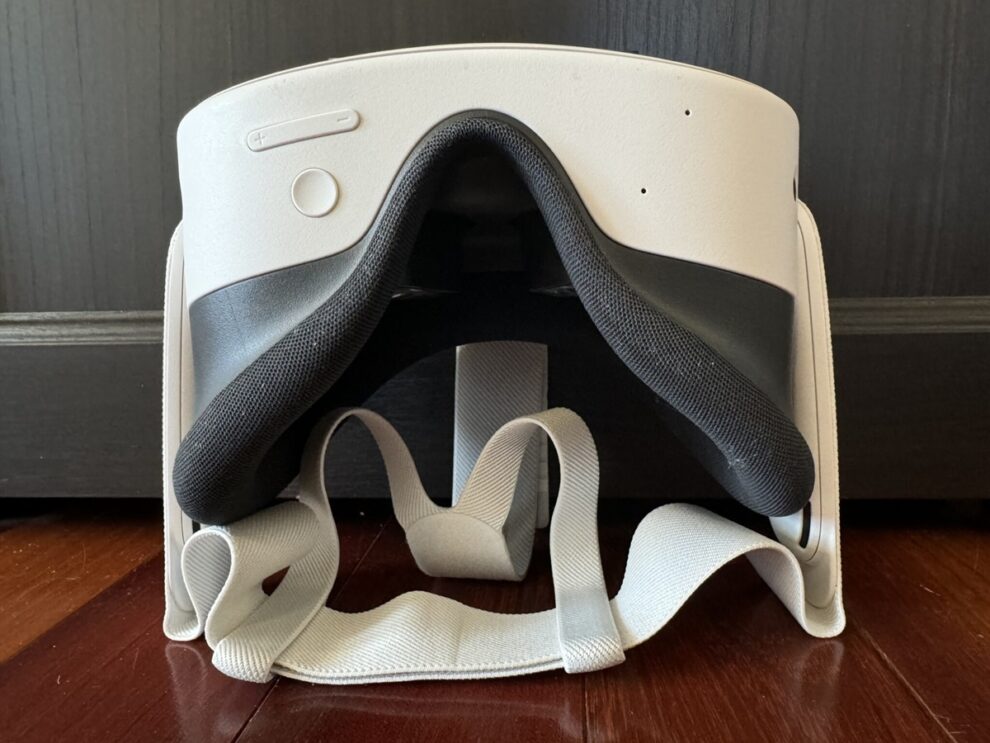The Meta Quest 3S has recently hit the market, with Meta positioning it as a more affordable alternative to its premium VR headset, the Meta Quest 3. While it brings a lower price point, many critics feel it falls short in the broader context of the VR world—especially compared to the vision that former Oculus CTO John Carmack once laid out: a low-cost, accessible virtual reality experience for the masses. But is the Quest 3S truly the budget VR headset many had hoped for, or is it a compromised half-step on Meta’s VR roadmap?
Let’s dive into the details, examine where the Meta Quest 3S excels, and where it falters in delivering the affordable VR future Carmack envisioned.
Who, What, When, Where, and Why of Meta Quest 3S
Who: Meta, the social media giant and owner of Oculus, has continued its push into the VR space with its latest offering, the Meta Quest 3S. Aimed at casual users and those hesitant to splurge on premium VR headsets, this headset targets an audience looking for immersive VR at a more budget-friendly price.
What: The Meta Quest 3S is a standalone VR headset priced at $299, designed as a more accessible alternative to the higher-end Meta Quest 3. It’s equipped with a Qualcomm Snapdragon XR2 Gen 2 processor and 8GB of RAM but comes with several compromises, including lower display resolution, fresnel lenses, and fewer pupillary distance (IPD) adjustments.
When: The Meta Quest 3S was launched in late 2024, coinciding with the ongoing expansion of Meta’s VR ecosystem.
Where: The Meta Quest 3S is available globally through Meta’s official store and major retailers.
Why: Meta aims to broaden the appeal of virtual reality by offering a more affordable headset, hoping to entice users who might find the premium Meta Quest 3 out of reach. However, this move has sparked debates over whether the Quest 3S delivers true value or if it cuts too many corners, disappointing those who expected a higher-quality product at a lower price.
A Half-Step Toward Carmack’s Vision
John Carmack, the legendary game developer and former CTO of Oculus, was always a strong advocate for creating affordable, high-quality VR headsets that could bring immersive experiences to the widest possible audience. His vision was clear: virtual reality should not be an expensive luxury but a democratized platform accessible to all.
The Meta Quest 3S is undoubtedly more affordable, but it falls short in key areas that make it a true budget VR device in Carmack’s terms. One of the major complaints is that it simply repackages old tech, rather than pushing the boundaries in ways that could drive costs down while maintaining quality.
The Quest 3S is essentially a slightly revamped Meta Quest 2, offering incremental upgrades without solving some of the long-standing issues that plague lower-cost VR headsets. While Meta has improved the hardware slightly, such as boosting processing power with the Snapdragon XR2 Gen 2 chip and improving the ergonomic design, these aren’t game-changing enhancements. For many, it feels like the headset is treading water rather than pushing forward.
Key Technical Compromises
At the heart of the Quest 3S’s limitations are a few critical compromises that detract from its overall value proposition:
- Display and Optics: The Meta Quest 3S sticks to the same 1,832 x 1,920 per-eye resolution as its predecessor, the Meta Quest 2, with fresnel lenses that continue to introduce glare and edge distortion. These lenses, while cheaper, reduce visual clarity compared to the more advanced pancake lenses found in the premium Meta Quest 3. The result is a noticeable screen-door effect that diminishes immersion. For a product aiming to offer a high-quality VR experience, these visual compromises are hard to overlook.
- Limited IPD Adjustments: One of the more glaring limitations is the return of the Quest 2’s three preset interpupillary distance (IPD) settings. In contrast, the Meta Quest 3 features a finer IPD adjustment range. For users whose IPD doesn’t align perfectly with one of the Quest 3S’s fixed settings, this results in a blurrier image and a less comfortable VR experience overall.
- Ergonomics and Comfort: While the Meta Quest 3S improves on the comfort front with a fabric-woven facial interface and a better strap system, it is slightly heavier than its predecessor. Additionally, the headset’s weight distribution has been criticized for being less optimal than the Meta Quest 3, making it less comfortable during longer VR sessions.
- Passthrough and Mixed Reality: The Quest 3S offers RGB passthrough for mixed reality, a step up from the grayscale passthrough of the Quest 2, but it still lags behind the Meta Quest 3. The lower resolution and visual clarity in passthrough mode can make tasks like reading text on a screen difficult. For those hoping for a more immersive and functional mixed-reality experience, the Quest 3S might not meet expectations.
Performance: Good, but Not Great
Despite these compromises, the Meta Quest 3S does have some redeeming qualities. Its Snapdragon XR2 Gen 2 chip and 8GB of RAM ensure smooth performance across most apps and games. Titles like Beat Saber and Walkabout Mini Golf run seamlessly, and the hybrid tracking system is both accurate and responsive.
However, the overall performance feels like a lateral move compared to the Quest 2. For users upgrading from older VR systems, the improvements may not justify the purchase. Moreover, while the Quest 3S handles casual gaming and light mixed-reality experiences well, it lacks the graphical fidelity and processing power required for more demanding VR applications.
Why the Meta Quest 3S Feels Like a Half-Step
The Quest 3S’s positioning as an affordable alternative to the Quest 3 feels like a compromise that detracts from Meta’s broader goals in the VR space. The headset certainly lowers the barrier to entry, but it does so at the cost of key features that would elevate the overall experience. In essence, the Meta Quest 3S is a half-step—not forward, but sideways—toward the affordable, high-quality VR experience Carmack dreamed of.
Meta’s decision to stick with older display technology and fresnel lenses while making only minor adjustments to ergonomics and performance creates the impression that the Quest 3S is a filler product, aimed at capitalizing on budget-conscious consumers without offering anything new or innovative.
This conservative approach risks alienating users who might have been expecting more, especially as competitors like the Pico 4 offer similar features at comparable price points.
The Path Forward: What Meta Should Focus On
Looking ahead, Meta needs to reconsider its strategy for budget VR. While the Meta Quest 3S might attract first-time VR users or those upgrading from the Quest 2, it doesn’t do enough to push the industry forward. To truly realize Carmack’s vision of accessible, low-cost VR, Meta must focus on:
- Improved Visuals: Pancake lenses and higher-resolution displays must become the standard across all tiers of VR headsets, not just premium models. The screen-door effect and lens glare are issues that can—and should—be addressed in future iterations of Meta’s budget headsets.
- Better Ergonomics: Weight distribution and comfort should be a priority, especially for longer VR sessions. This is particularly important for users who want to exercise or engage in social VR experiences.
- More Customization: Offering finer IPD adjustments and more flexible customization options would make the headset accessible to a wider audience, improving the overall user experience.
- Innovative Passthrough: Mixed reality has the potential to revolutionize how we use VR, but lower-end models like the Quest 3S need to deliver a more convincing passthrough experience if Meta wants users to see value in this feature.
Conclusion: A Missed Opportunity
The Meta Quest 3S is a competent VR headset that offers good performance at a lower price, but it’s a disappointment for anyone hoping for a true leap forward in affordable virtual reality. Carmack’s vision for low-cost VR remains elusive, as the Quest 3S ultimately feels like a step sideways, not forward. For those who already own a Quest 2, the improvements may not be significant enough to warrant an upgrade. For new users, it’s a decent entry point—but it leaves much to be desired in terms of innovation and value for money.











Add Comment